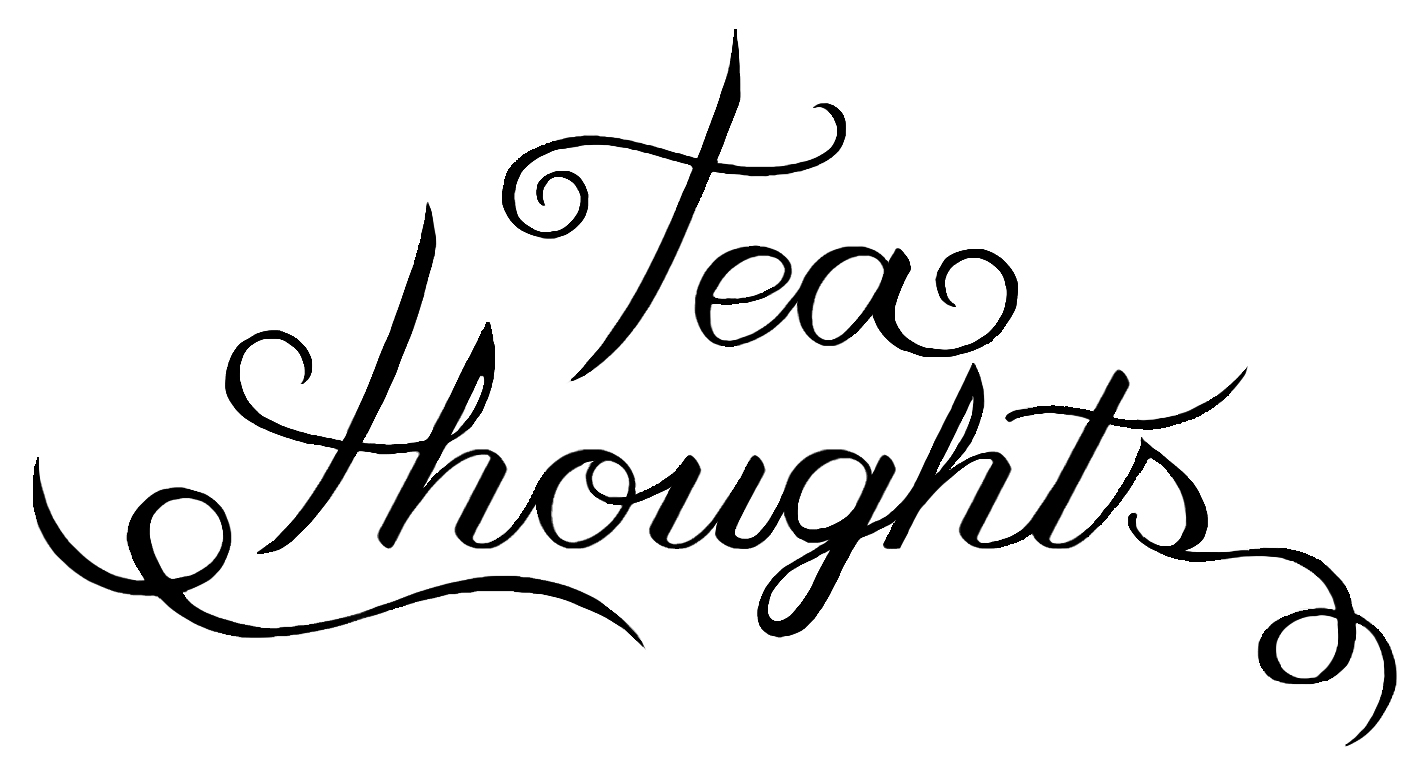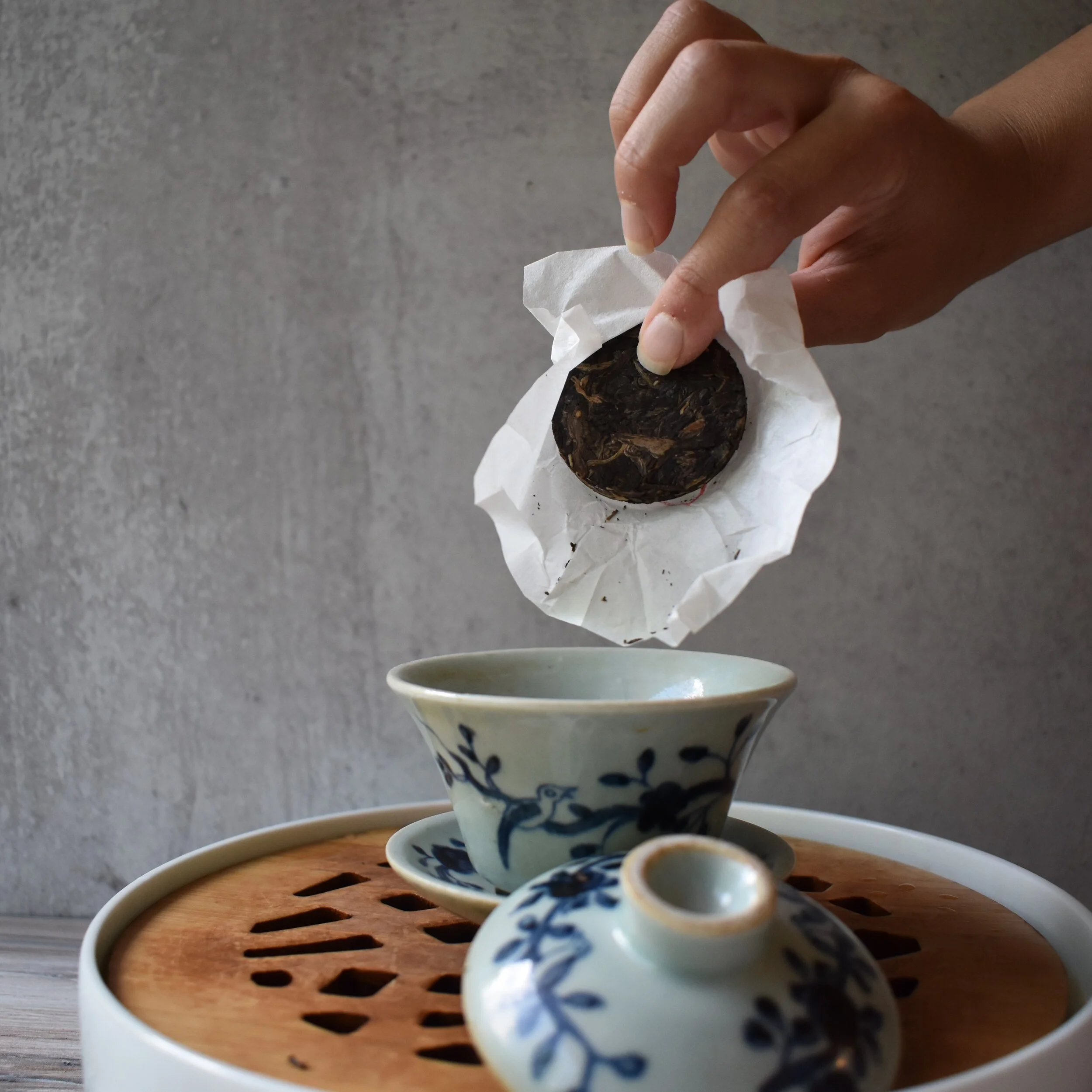Intuitive Brewing
Let’s talk about brewing tea. More specifically, intuitive brewing. What do I mean by intuitive brewing?
When I use this term I’m referring to the brewing the tea with experimentation and feeling. This isn’t to say that I never follow brewing instructions but mostly when I brew tea, I keep it pretty relaxed and don’t keep to a strict brewing method.
I wanted to share this post with you all because I get a lot of questions about tea and while I do know the answers most of the time and can talk about brewing, I also recognize that there are tons of bloggers and educators out there who can do a better job than I. One site you should definitely check out to learn lots of things about tea from basics to brewing is Nicole from Tea For Me Please! I really like the mix of tea related content on her blog!
There are so many great bloggers our there but a couple others that I really enjoy reading their posts are":
Let’s go over a few things before I get into some of my processes. The majority of the teas I drink (90%) are oolongs, white tea and ripe and raw pu’er. These are all teas that are perfect for gongfu cha style brewing and higher temperatures. Theses are the types of teas I am referring to when I discuss brewing methods.
Before I do anything, I will inspect the dry leaf of a tea. Is it loose? Compact? Dark? Light? Rolled? Green?
These don’t have too much of an impact on how I brew temperature wise but they give me a hint about how long I’ll need to keep each infusion. I also like to guess the brewed tea color or taste based off the look of the leaf and see if I’m right or not!
Boiling water: I know I’m not the only one who does this but this may be frowned upon by some people. For the teas I mentioned above, I always boil the water. Even if a tea specifically says that it should be lower temp I will try it at a lower temp and also try at boiling for comparison.
I find that the majority of these teas, can take the heat. I personally do like stronger tastes so this might be different for you if you don’t feel the same. I find that boiling water can help me see what the tea is made of and can extract some delightful flavors. So in terms of water, this is generally what I use.
Infusion Times: Here is where I get very experimental. Instead of throwing in the leaves and water and setting a timer, I like to get into the moment with my tea. To start, I may measure the tea or eyeball it. When using a gaiwan (my go-to), if I make sure the bottom is covered well in leaves it’s usually a good amount. If I am in for a strong brew I will fill the gaiwan up more.
I will usually try a very short infusion at first to see what the tea is like. like 10 seconds. If you’re new to gonfucha, this isn’t strange but it may feel strange if you’re new. The amount of tea used in such a small vessel allows for a wonderful flavor in multiple, shorter infusions.
After a couple short infusions, I start adding a little time. Sometimes I will count, sometimes I like to just open up the lid of the gaiwan and look at the leaves and the liquor color. Are the leaves expanded? Does the liquor look the color I want it to be? The nice thing about a tea that you can infuse multiple times is that if you don’t get a brew that you like, you can always adjust and try again!
Other aspects: Other things I make sure to do throughout this process is make sure to check on the leaves. Not only is this beautiful but it lets you know how they are holding up. Don’t forget to smell. Smell the dry leaves, wet leaves, lid and bowl! All of these aspects help you feel “closer” to the tea and to me, improves your tasting experience.
Do you have any questions for me? Other topics you want me to discuss? Comment and let me know!
Gong Fu Cha Tea Practice for Better Mental Health
Before I get into this post, I want to preface it by saying that I am not a health care professional and the opinions expressed here are based off of my own experience. I think it’s important to mention this for obvious reasons but also because there are so many bogus health claims around tea and I want to set myself apart from those. This is a case for Gong Fu Cha improving mental health in a general sense.
If you aren’t familiar with Gong Fu Cha, I’ve seen it translated in a few different ways such as “tea with effort” or “tea with great skill”
Effort? Aw man, I thought this was going to be an easy way to improve mental health!
If you look into this tea practice, there are lots of different ideas about it’s history and how it should be done. I think from an outside perspective or someone who hasn’t done it before it can look intimidating. I promise you that once I break down some of the essentials, you’ll see that the practice is really something that you make your own. In my opinion, you should brew tea how you wish and if it tastes good to you then you’re doing it right!
Before I knew what this practice was all about, I went to YouTube to find out the basics. I fell down a rabbit hole of brewing videos of people practicing gong fu cha. I was intimidated but intrigued. I did notice that every video I watched was different. People use different tools, set up their table differently and brew differently. I’ve come to realize that there aren’t many hard and fast rules but some guidelines to help.
Here are some of the very basics of gong fu cha:
Tea
Generally speaking, when using the gong fu cha brewing method, it’s for a specialty tea. This is a type of tea that is higher quality with more depth in the flavor profile and the ability to be brewed many times and keep it’s quality.
Set Up and tools
This also varies but usually you will find a tea table or tray where you can pour tea waste or washing. In terms of tools, the brewing vessels are much smaller than the traditional western style pots.
When I brew tea gong fu cha, I am usually brewing tea for myself but it is also possible to brew for several people. The teas that I brew go in a gaiwan or small tea pot and are brewed many times. I’ve brewed some of my favorite teas 10 or more times! This style provides different flavors for each brew and generally speaking as opposed to western brewing.
So what does this have to do with mental health?
For me, increased mindfulness means better mental health. Here’s why. We are busy bodies. We want to hustle, work hard and achieve greatness. I am one of these busy bodies and often, everything that we’re doing and have to do are overwhelming. We’re moving so fast and continually picking things up along the way that it feels impossible to slow down.
I’ve always thought of tea time in general as my slow down time. Even if I make a quick cup in the morning, I have to slow down to do so and the enjoyment I feel when I slowly take those sips calms me down. The reason I’m advocating for Gong fu cha is because you can’t just take a minute or two. You need to carve out some time to prep, brew and enjoy. It’s a ritual that once you make the time, it can be your everyday time to ground yourself.
I think that too many people advocate for clearing your mind all the time. While prepping your tea can help you focus on the tea as opposed to other things, but the larger benefit is allowing you to acknowledge your stress or troubles while you sip your tea. As you taste your tea, you can organize your thoughts. you can see what is worth moving to the top of your list and what isn’t. You can say, sure there is this thought that is negative but I see it and It doesn’t doesn’t own or define me.
In addition to facing your thoughts, it helps increase mindfulness in the moment and with practice it will help with this overall. When you slow down to prep your cup, it’s easy to practice listening to the sounds around you and noticing details. When you’re moving fast, it’s easy to take all the sounds for granted. When you slow down to listen a little you start to see how vast our world really is.
Once you make time for this ritual often, what you’re doing is prioritizing taking a break. You’re taking time to care for yourself and you’re taking time to try some delicious tea! These are all called practices because you may not get it all on the first try!
I have a short guide about this called meTEAtation in my shop but I wanted to share some tips here too for mindfulness when drinking tea
-Enjoy every moment of this time. Look at your tea packaging, read about your tea, inspect your tea, smell your tea!
-When brewing, play around! I sometimes like to see how high I can pour the water from the kettle before making a mess!
-When brewing, take in all the smells. Smell the leaves dry and wet, smell the lid of your brewing vessel and inside it as well! All these things add to the experience
-Take note of the transformation of your tea. Especially if you have tightly rolled oolongs, tea cakes or any compressed tea - the transformation after brewing is beautiful.
In conclusion, the case for Gong Fu Cha for mental health centers around the time you take to slow down and enjoy little actions, reactions, sounds, details and smells.
I’m going to list some resources below. I’ve included two of my favorite places to buy teaware and tea in addition to some amazon recommendations as some people prefer that.
1) Tea and Teaware: Bitterleaf Teas (they’re having a sale right now!!)
3) Amazon
-





